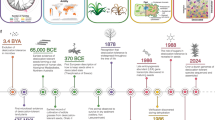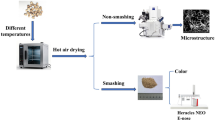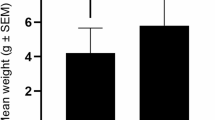Abstract
THE ecological significance of an experimentally demonstrated and strongly marked preference for low humidities shown by certain arthropods has recently been discussed by Smith1. Tenebrio molitor L. is one insect the behaviour of which in humidity gradients has been fully studied and which shows a well-defined dry preference2–4. In laboratory cultures of adult Tenebrio, however, we have frequently observed that, if a wad of wet cotton-wool be placed in the culture dish, the animals rapidly accumulate on the wool and drink. It is thus clear that the dry preference does not express itself in all conditions.
This is a preview of subscription content, access via your institution
Access options
Subscribe to this journal
Receive 51 print issues and online access
$199.00 per year
only $3.90 per issue
Buy this article
- Purchase on SpringerLink
- Instant access to full article PDF
Prices may be subject to local taxes which are calculated during checkout
Similar content being viewed by others
References
Smith, A., Bull. Ent. Res., 42, 585 (1951).
Pielou, D. P., and Gunn, D. J., J. Exp. Biol., 17, 286 (1940).
Pielou, D. P., J. Exp. Biol., 17, 295 (1940).
Gunn, D. L., and Pielou, D. P., J. Exp. Biol., 17, 307 (1940).
Willis, E. R., and Roth, L. M., J. Exp. Zool., 115, 561 (1950).
Author information
Authors and Affiliations
Rights and permissions
About this article
Cite this article
DODDS, S., EWER, D. Effect of Desiccation on the Humidity Response of Tenebrio. Nature 170, 758 (1952). https://doi.org/10.1038/170758a0
Issue date:
DOI: https://doi.org/10.1038/170758a0
This article is cited by
-
10.1007/BF00573830
CrossRef Listing of Deleted DOIs (2011)
-
10.1007/BF00293613
CrossRef Listing of Deleted DOIs (2011)
-
Vergleichende untersuchungen �ber das verhalten von Carabus-Arten in luftfeychtigkeitsgef�llen
Zeitschrift f�r Morphologie und �kologie der Tiere (1965)
-
Die Abh�ngigkeit der Luftfeuchte-Reaktionen der Mehlmilbe (Acarus siro L.) vom Wassergehalt des K�rpers
Zeitschrift f�r Vergleichende Physiologie (1962)



